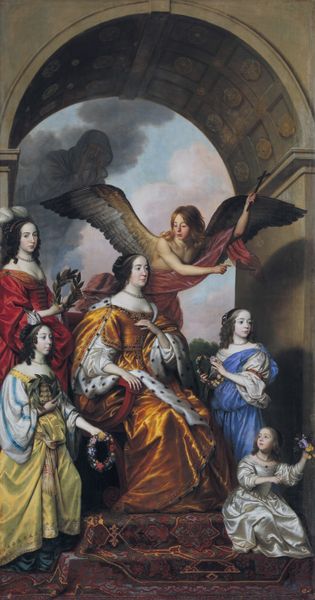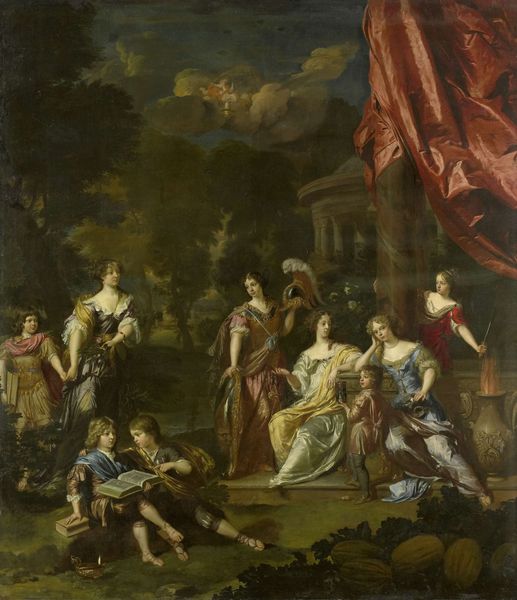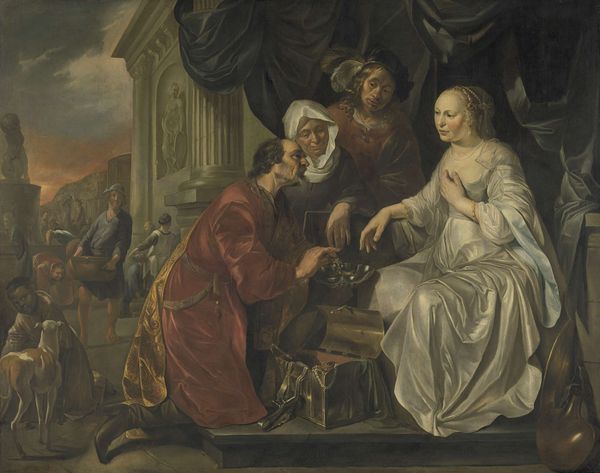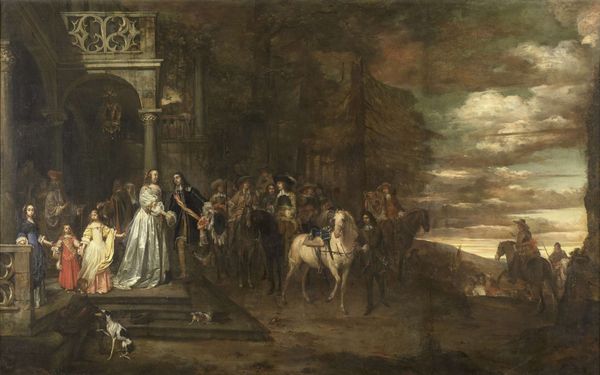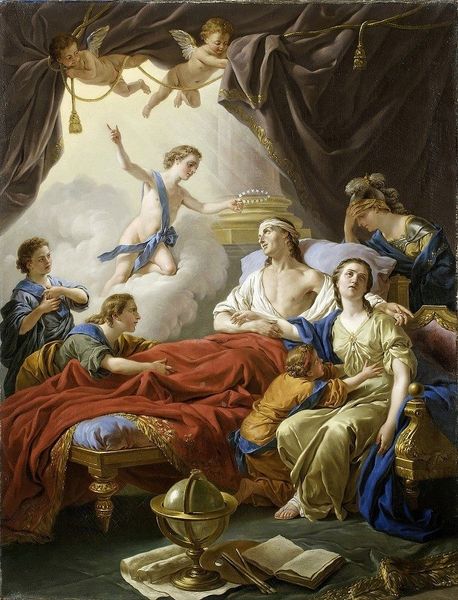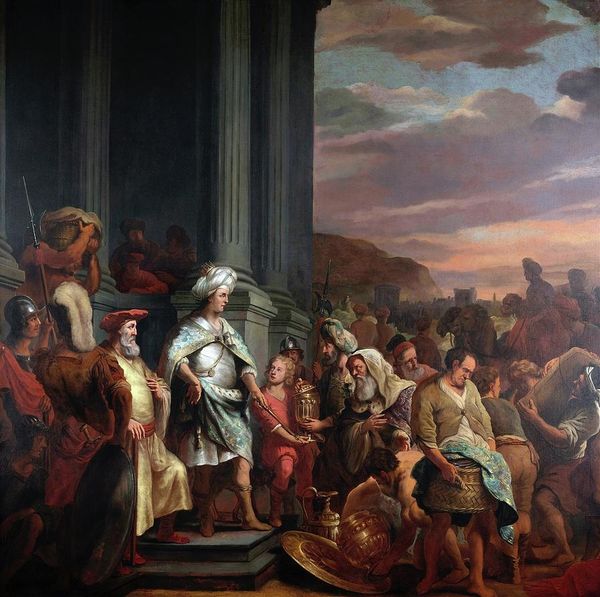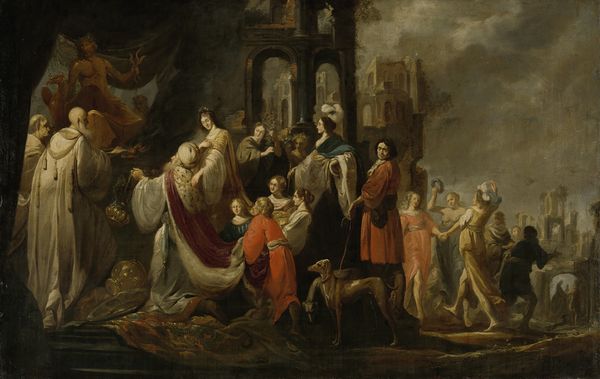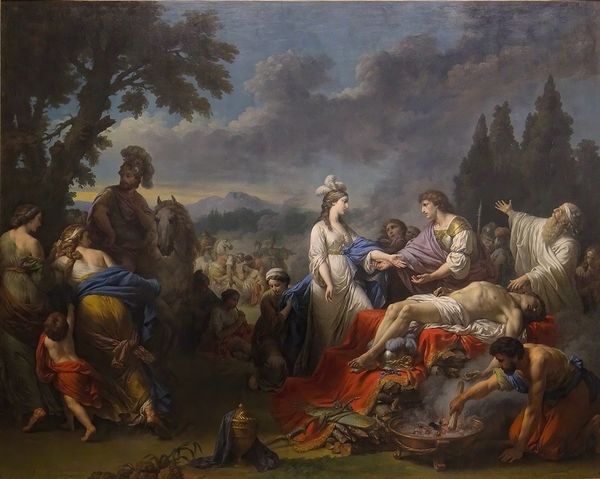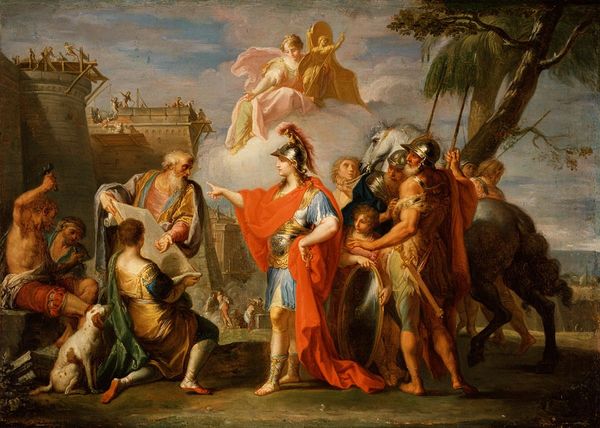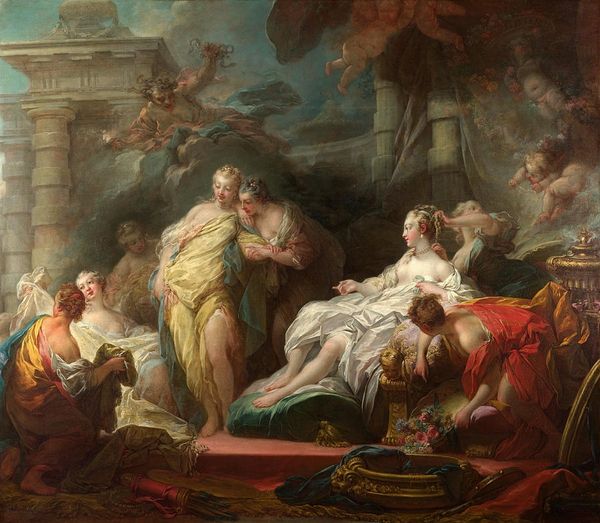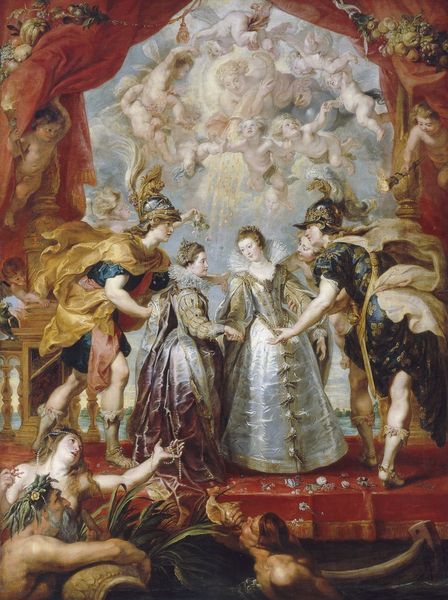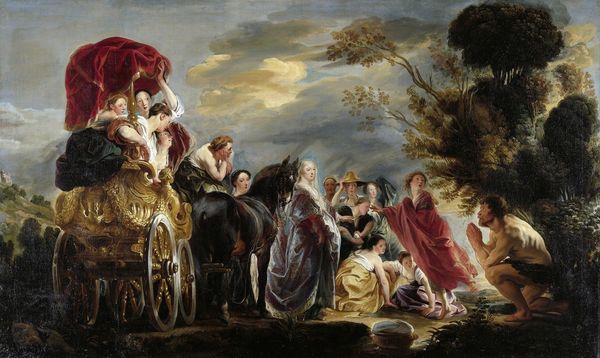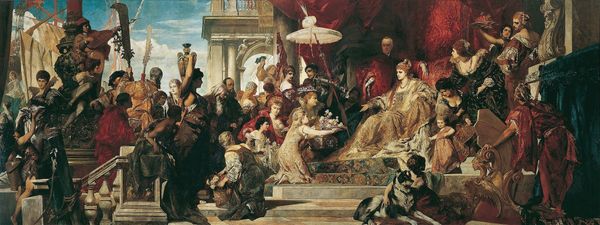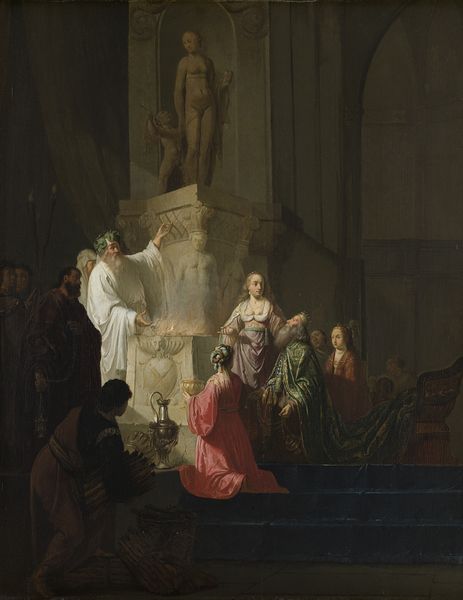
The Triumph of the Winter Queen: Allegory of the Just (Queen Elizabeth with Prince Gustavus) 1636
0:00
0:00
#
gouache
#
imaginative character sketch
#
character art
#
possibly oil pastel
#
character sketch
#
underpainting
#
mythology
#
painting painterly
#
watercolour bleed
#
watercolour illustration
#
watercolor
Copyright: Public domain
Editor: This painting is entitled *The Triumph of the Winter Queen: Allegory of the Just (Queen Elizabeth with Prince Gustavus)*, crafted in 1636 by Gerard van Honthorst. It has an almost theatrical grandeur to it – what strikes you most about it? Curator: Well, beyond the obvious splendor, I’m drawn to the symbolic weight it carries. Think of it as a meticulously staged drama. What do you suppose Honthorst wants us to feel about Elizabeth, the Winter Queen, after her family's exile? Does it read as pure triumph, or is there something else simmering beneath the surface, perhaps a hint of longing for what was lost? Editor: I see what you mean. It's celebratory, certainly, but maybe a bit melancholic? It's not a simple portrait; there are a lot of layers to unpack here, historically and artistically. Why depict her this way, in such an elaborate allegory? Curator: Exactly! The key lies in understanding the context. Elizabeth, after her husband lost his Palatinate crown, was desperate to regain her power. Here, she is apotheosized. How can this defeat be turned to look like victory, if you could give someone the courage of conviction to see a "victory?" By presenting Elizabeth as a triumphant, almost goddess-like figure, she and Honthorst want us to forget recent history, and buy into a future she is engineering. Does that shed a little light on that...tension you were seeing? Editor: Yes, that’s really helpful. So the painting functions as propaganda, in a way. Curator: Oh, all art from that era served a purpose. This painting uses familiar allegorical devices, Roman mythology and Christian symbols combined to recast this Englishwoman as both regal and, crucially, just. Is Honthorst celebrating justice more so than royal power? That might just save face for the dethroned family. I wonder if any contemporaries had issue with his decision. What does Honthorst even care about, painting this portrait for someone from a faraway country? So many interesting problems to chew on! Editor: Definitely something to keep thinking about! Thanks, this painting feels much more complex now. Curator: My pleasure! Now I can continue contemplating which elements of my explanation would prove the flakiest!
Comments
No comments
Be the first to comment and join the conversation on the ultimate creative platform.
